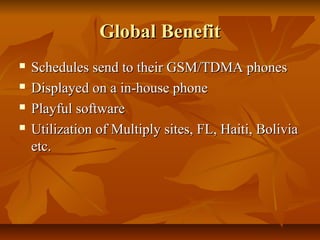This document discusses integrated methodologies for workforce management including Six Sigma, Etom, COPC 2000, and ISO standards. It describes implementing time management through predetermined schedules, bidding on time slots, and schedule adherence. The goals are to reduce management supervision, increase productive time usage, and empower employees. Stages of integration include defining goals, specification, implementation, follow up and evaluation. Benefits discussed include increased production, understanding, satisfaction, involvement and mission comprehension.












